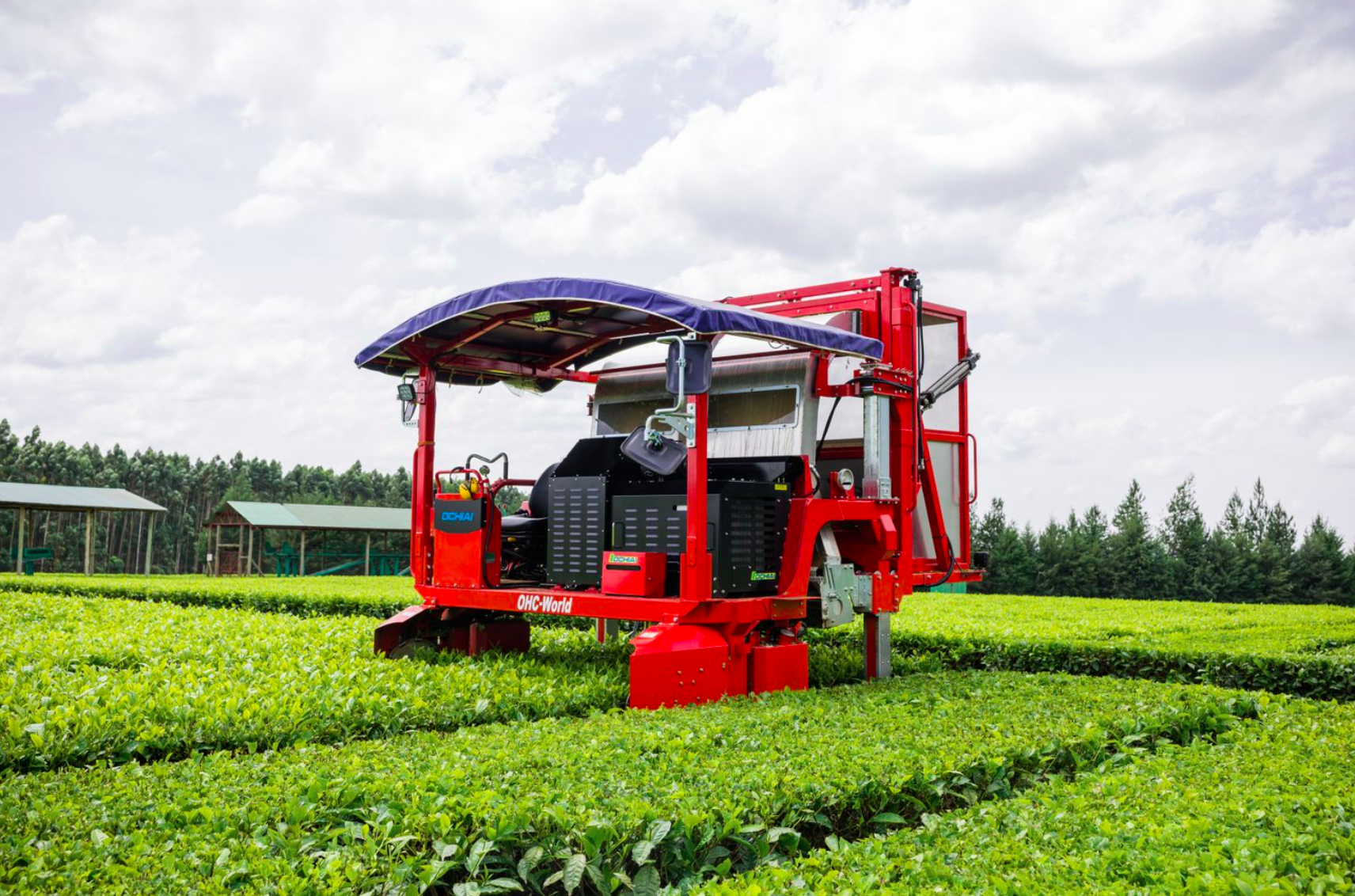
AI in Agriculture: Precision Farming and Beyond
In recent years, the agricultural industry has witnessed a remarkable transformation with the advent of Artificial Intelligence (AI). From precision farming to predictive analytics, AI is revolutionizing the way we produce and manage food. This blog post delves into the myriad ways AI is impacting agriculture, offering insights, statistics, and actionable tips to help you understand and leverage these advancements.
Introduction to AI in Agriculture
Artificial Intelligence, at its core, involves the development of computer systems capable of performing tasks that typically require human intelligence. These tasks include learning, reasoning, problem-solving, and decision-making. In agriculture, AI technologies are being employed to enhance efficiency, productivity, and sustainability.
According to a report by MarketsandMarkets, the AI in agriculture market is projected to reach $4 billion by 2026, growing at a Compound Annual Growth Rate (CAGR) of 25.5% from 2021. This rapid growth is fueled by the increasing adoption of precision farming techniques and the need for enhanced agricultural productivity to meet the demands of a growing global population.
Precision Farming: The Heart of AI in Agriculture
Precision farming, also known as precision agriculture, is an approach that uses technology to monitor and optimize agricultural processes. AI plays a crucial role in precision farming, enabling farmers to make data-driven decisions that improve crop yield, reduce waste, and conserve resources.
Soil and Crop Monitoring
AI-powered sensors and drones are revolutionizing soil and crop monitoring. These devices collect data on soil moisture, nutrient levels, and crop health, which is then analyzed by AI algorithms to provide actionable insights. For example, AI can detect early signs of crop diseases or nutrient deficiencies, allowing farmers to take corrective actions promptly.
According to a study published in the journal Remote Sensing, the use of AI in crop monitoring can increase yield by up to 30% while reducing input costs by 20%. This highlights the significant potential of AI in optimizing agricultural practices.
Automated Irrigation Systems
Water management is a critical aspect of farming, and AI is making it more efficient through automated irrigation systems. These systems use AI algorithms to analyze weather forecasts, soil moisture levels, and crop water requirements to determine the optimal irrigation schedule. This not only conserves water but also ensures that crops receive the right amount of water at the right time.
Research by the World Bank suggests that AI-powered irrigation systems can reduce water usage by up to 50%, making them an essential tool for sustainable agriculture.
Predictive Analytics for Crop Management
Predictive analytics, powered by AI, enables farmers to anticipate and mitigate risks associated with crop production. By analyzing historical data and current conditions, AI can predict pest infestations, weather events, and market trends. This information empowers farmers to make informed decisions about planting, harvesting, and selling their crops.
For example, IBM’s Watson Decision Platform for Agriculture uses AI to provide farmers with actionable insights on crop management, resulting in increased productivity and reduced losses. According to IBM, farmers using this platform have reported a 10-15% increase in crop yield.
Beyond Precision Farming: Other Applications of AI in Agriculture
While precision farming is a significant application of AI in agriculture, it is by no means the only one. AI is being leveraged in various other areas to enhance the efficiency and sustainability of agricultural practices.
Robotic Harvesting
Labor shortages are a persistent challenge in agriculture, particularly during peak harvesting seasons. AI-powered robots are addressing this issue by automating the harvesting process. These robots use machine learning algorithms and computer vision to identify and pick ripe fruits and vegetables with precision.
For instance, the startup FFRobotics has developed a robotic harvester capable of picking apples, peaches, and other fruits. According to the company, their robots can perform the work of 10 human laborers, significantly reducing labor costs and increasing efficiency.
Supply Chain Optimization
AI is also transforming agricultural supply chains by improving logistics and reducing waste. AI algorithms can analyze data on weather conditions, transportation routes, and market demand to optimize the movement of goods from farm to market. This ensures that produce reaches consumers in optimal condition and at the right time.
For example, the AI-driven platform Taranis uses satellite imagery and machine learning to monitor crop conditions and predict harvest times. This information helps farmers and distributors plan their logistics more effectively, reducing post-harvest losses by up to 30%.
Livestock Management
AI is also making strides in livestock management, enhancing animal health and productivity. AI-powered sensors and cameras can monitor the behavior, health, and well-being of livestock in real-time. This data is analyzed to detect early signs of illness, stress, or other issues, allowing farmers to take timely action.
For instance, Cainthus, an agtech company, uses computer vision and AI to monitor dairy cows. Their system can track individual cows, analyze their behavior, and provide insights on health and productivity. According to Cainthus, their technology can increase milk production by up to 12% while reducing veterinary costs.
Actionable Tips for Integrating AI into Agriculture
As AI continues to evolve, its integration into agriculture presents numerous opportunities for farmers and agribusinesses. Here are some actionable tips to help you harness the power of AI in your agricultural practices:
1. Start Small and Scale Gradually
Begin by implementing AI technologies on a small scale to assess their impact and feasibility. For example, you can start with AI-powered sensors for soil monitoring or automated irrigation systems. As you become more familiar with the technology and its benefits, you can gradually expand its use across your farm.
2. Invest in Training and Education
AI technologies require a certain level of expertise to operate effectively. Invest in training and education for yourself and your staff to ensure you can maximize the benefits of AI. Many agtech companies offer training programs and resources to help farmers get started with their AI solutions.
3. Collaborate with Agtech Companies
Collaborating with agtech companies can provide you with access to cutting-edge AI technologies and expertise. These companies often offer customized solutions tailored to your specific needs, helping you achieve better results. Consider partnering with reputable agtech firms to stay ahead of the curve.
4. Leverage Data for Decision-Making
Data is the backbone of AI. Ensure you are collecting and analyzing relevant data to make informed decisions. Use AI-powered tools to gather data on soil conditions, crop health, weather patterns, and market trends. This data-driven approach will enable you to optimize your agricultural practices and improve productivity.
5. Focus on Sustainability
Sustainability is a key consideration in modern agriculture. Use AI technologies to implement sustainable practices that conserve resources and reduce environmental impact. For example, AI-powered irrigation systems can help you use water more efficiently, while precision farming techniques can minimize the use of chemical inputs.
Conclusion
AI is undeniably transforming agriculture, offering innovative solutions to some of the industry’s most pressing challenges. From precision farming to supply chain optimization, AI technologies are enhancing efficiency, productivity, and sustainability. By understanding and integrating AI into your agricultural practices, you can stay competitive and contribute to a more sustainable future for agriculture.
As the AI in agriculture market continues to grow, staying informed about the latest advancements and best practices is crucial. Embrace the power of AI and take proactive steps to leverage its potential in your farming operations. The future of agriculture is bright, and AI is leading the way.

